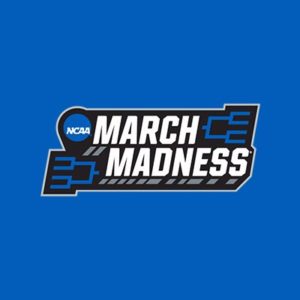
This past week, the National Collegiate Athletic Association (NCAA) initiated an opposition proceeding against a Missouri-based company known as TM2A, Inc., which is attempting to register “MARCH MULLIGANS” as a trademark. The Missouri company, TM2A, Inc., which stands for “The March to April” invented a new twist on the traditional March Madness bracket challenge by allowing fans to correct erroneous game predictions during the competition. The purpose of “March Mulligans” is to maintain fans’ interest in the Tournament even after their brackets otherwise would have busted. The classic basketball bracket challenge involves a grid of all the teams in the tournament and selecting predicted winners in each of the 67 games. No one has ever successfully filled out a perfect bracket.
The NCAA is a non-profit organization that regulates the athletes of over 1200 North American institutions and conferences. The NCAA Division I Men’s Basketball Tournament, otherwise known and branded as March Madness, is a single-elimination tournament played each spring featuring the college basketball teams from the Division I level schools to determine the national championship. The NCA owns various registrations for “MARCH MADNESS”, eight of such registrations were cited in the NCAA’s Notice of Opposition. The first registration for “MARCH MADNESS” was filed in 1989 in International Class 041 for “entertainment services, namely, presentation of athletic and entertainment personalities in a panel forum.”
In March 2015, TM2A filed an intent-to-use trademark application to register “MARCH MULLIGANS” in connection with “entertainment services, namely, organizing, conducting and providing online electronic sweepstakes, games of chance and contests.” Three years later, the application was published for opposition, at which point the NCAA filed an opposition to the mark’s registration. The opposition claims that the applied-for mark, “MARCH MULLIGANS,” is confusingly similar to the NCAA’s “MARCH MADNESS” marks and that if the applied-for mark were to register, consumers are likely to be confused, mistaken, or deceived into believing there exists an association between NCAA’s prior marks and the non-traditional bracket challenge.
Upon acceptance by the examiner in the United States Patent and Trademark Office, an application for registration on the Principal Register is published for opposition in the Official Gazette. This initiates a period of 30 days within which any oppositions to registration of the mark must be filed. Once an opposition is filed, the case will proceed before the Trademark Trial and Appeal Board (TTAB), which follows the Federal Rules of Civil Procedures used in general civil actions. However, there is no formal trial before the TTAB. Instead, there is first a testimony period, during which the opposer submits evidence in support of opposition and the applicant responds with evidence supporting registration. The evidence may be in the form of depositions, admissions, answers to interrogatories and each party is provided the opportunity to rebut the other side’s proof. Upon conclusion of the testimony period, the parties file briefs and the TTAB will only hear oral arguments by the parties upon the request of either party.
Any party that believes that he or she would be damaged by the registration of a mark on the Principal Register may file an opposition. In particular, the opposer must demonstrate that it has standing and that there exists a statutory ground that negates the applicant’s entitlement to registration. Standing requires that the opposer have a direct and personal stake in the outcome of the proceeding. Also, the belief of damage must have a reasonable basis in fact and not be merely subjective. With respect to the second requirement, the opposer may assert any statutory ground that negates the applicant’s entitlement to registration, including likelihood of confusion, mere descriptiveness of the mark, dilution, functionality, genericness, disparagement, geographic descriptiveness, or that the applicant has no bona fide intent to use the mark.
The NCAA claims it has offered and sold millions of dollars’ worth of goods and services in connection with its “MARCH MADNESS” mark and that it has also spent significant sums advertising and promoting its mark throughout the United States. As a result of such expenditures, the NCAA asserts that its mark represents extremely valuable goodwill. Moreover, the NCAA claims its registrations are all incontestable, which provides conclusive evidence of the validity of a registered trademark, the registrant’s ownership of the mark, and the registrant’s exclusive right to use the mark in commerce. Thus, the NCAA claims not only that consumers are likely to be confused if TM2A’s mark were to issue but also that the distinctive quality and reputation of its MARCH MADNESS mark will be diluted if TM2A’s MARCH MULLIGANS mark is used in commerce.
TM2A has yet to file a response to the NCAA’s trademark opposition and has until April 20, 2019 to do so, absent the filing of an extension. This is another instance of the NCAA using its vast resources to protect its intellectual property. Indeed, the NCAA has historically been aggressive in patrolling and enforcing its marks. For example, in 2017, the NCAA filed a trademark infringement action against a company that ran online sports-themed promotions and sweepstakes under the marks “April Madness” and “Final 3.” Another case involved a car dealership that had registered and was using the mark “Markdown Madness” in advertising.
